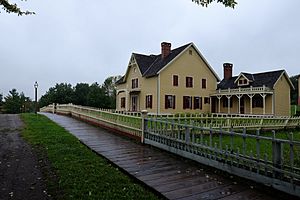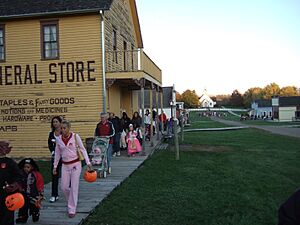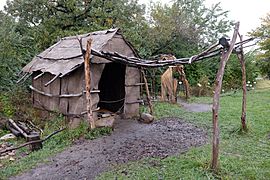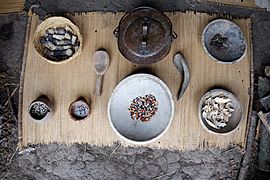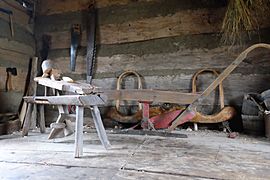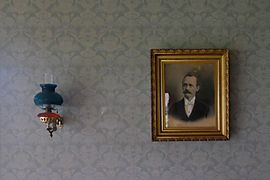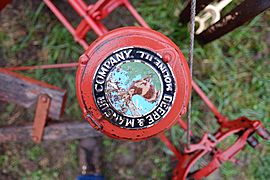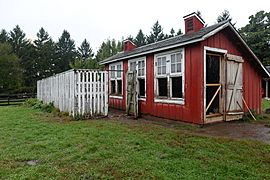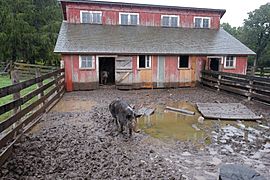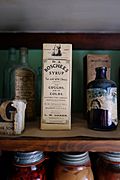Living History Farms facts for kids
Living History Farms is a cool 500-acre museum in Urbandale, Iowa, United States. It's an open-air museum, which means many exhibits are outside. The museum's main goal is to teach everyone about the history of farming and country life in the Midwest. It's called "living history" because people at the museum show you what life was like on farms in the years 1700, 1850, and 1900. You can see how people farmed and lived long ago!
Contents
Discovering the Past: Living History Farms
How Living History Farms Began
Dr. William G. Murray, an expert in farming economics from Iowa State University, started Living History Farms. He wanted a place where history wasn't just seen behind glass. Instead, he wanted visitors to experience history as if they were living it. The museum first opened its doors to the public in 1970.
A Special Visit from the Pope
On October 4, 1979, a very important event happened at Living History Farms. Pope John Paul II visited the museum! He held a special service for about 340,000 people. During his speech, the Pope talked about how important farming is. He explained that farmers help feed everyone in the country. He also spoke about taking care of the land.
Exploring the Farms and Town
The museum is split into two parts by a big highway. A special cart pulled by a tractor takes visitors from the entrance to the other side. You start at the Visitor Center, which is next to the 1875 town. Then you ride the cart to see the older farms.
After visiting the 1700 Ioway Farm, the 1850 Farm, and the 1900 Farm, you return to the town area. The 1875 town of Walnut Hill has many buildings. These include a general store, a schoolhouse, and a fancy Victorian house. The Martin and Ellen Flynn Home and barn are original buildings from that time.
The 1700 Ioway Indian Farm
At the 1700 Ioway Indian Farm, you can learn about the farming methods of the Ioway Tribe. Experts helped design this farm to be just like it was back then. You'll see crops from the 1700s, like blue corn. People working there will tell you about the Ioway way of life. They explain things like hunting, the jobs of men and women, and how tools were made. You might even see demonstrations of tanning animal hides or making traditional pottery.
The 1850 Pioneer Farm
The 1850 Pioneer Farm has a log cabin. Inside, you can see how women cooked over a fire using heavy cast iron pots. You'll also see tasks done by hand, like spinning wool into thread. Outside, you can watch an ox pull a plow to prepare the fields. Farmers grew crops like corn, wheat, and potatoes here.
The 1875 Town of Walnut Hill
The 1875 Town of Walnut Hill shows what a small town was like during that time. It has a general store where people bought supplies. There's also a schoolhouse, a bank, and a law office. This town helps you understand how people in town, shopkeepers, and farmers depended on each other.
The 1900 Horse Powered Farm
The 1900 Horse Powered Farm shows how new machines changed farm life. This was during the Industrial Revolution. Machines started to do work that people used to do by hand. Even work inside the farmhouse changed, with new ways to preserve food like canning.
How the Museum Works
The people you meet at Living History Farms are called "interpreters." They dress in clothes from the time period they are showing. However, they don't pretend to be someone from the past. They will tell you, "I baked this bread," or "This is how a Print Shop would look in the year 1875." Because they don't act like they're truly from the past, you can ask them questions about today's world, and they will answer you directly.
- Living History Farms


